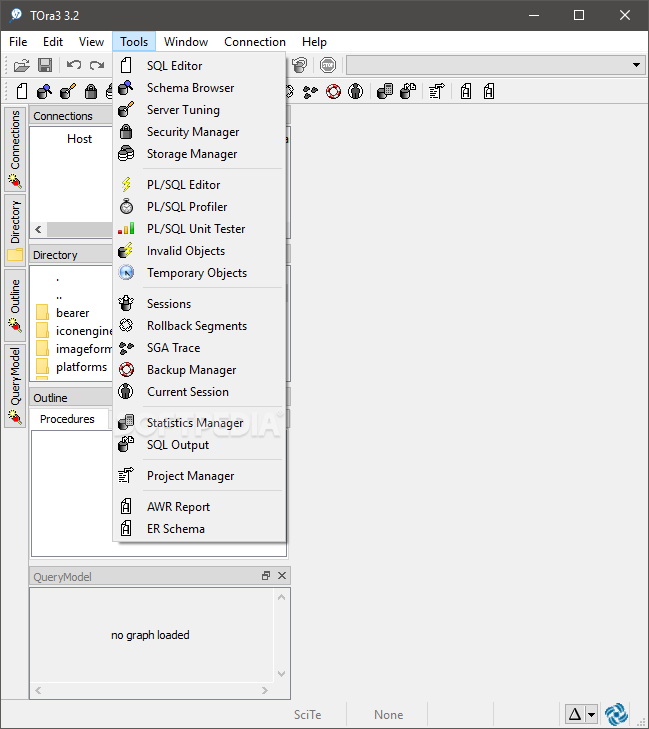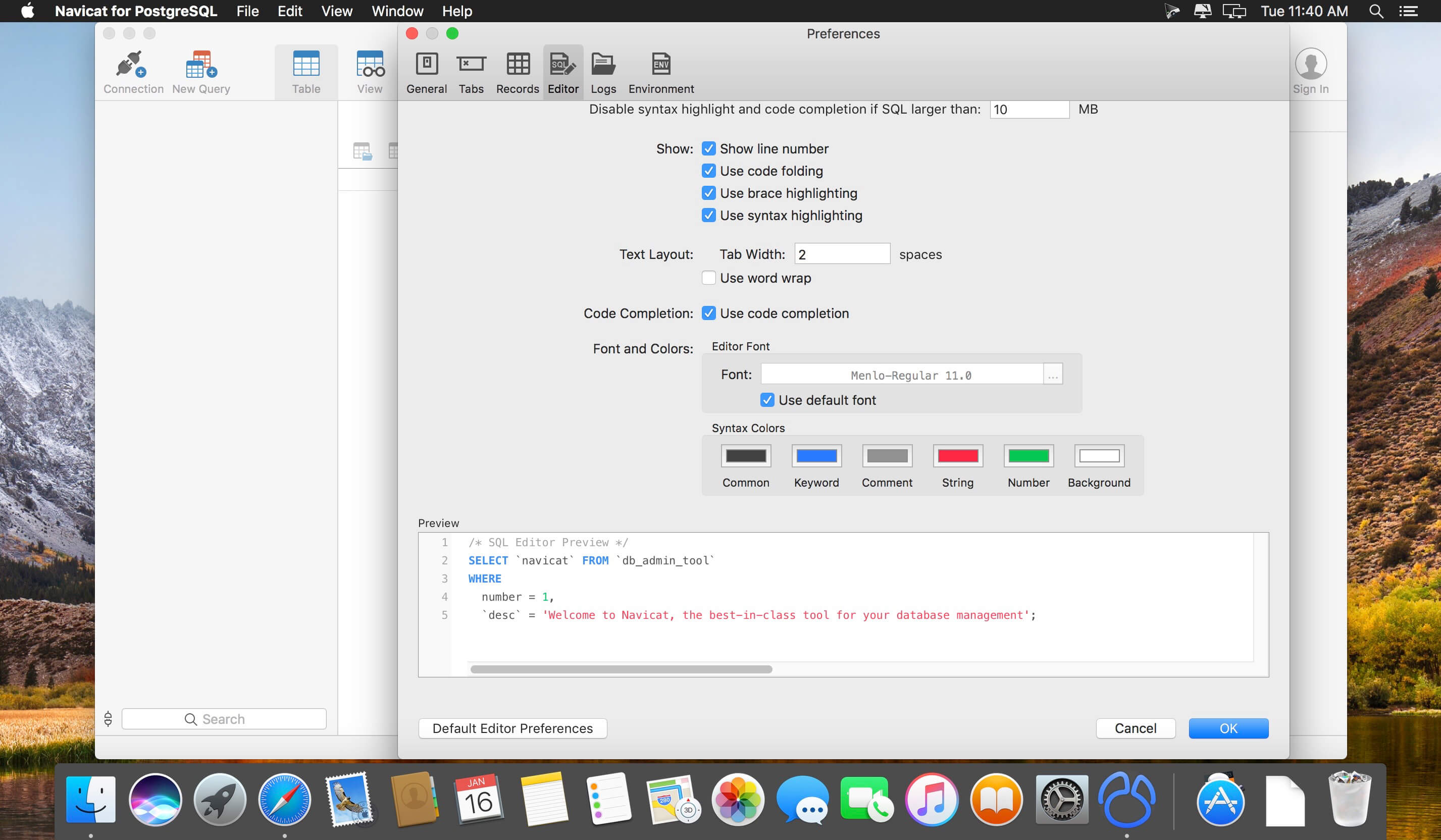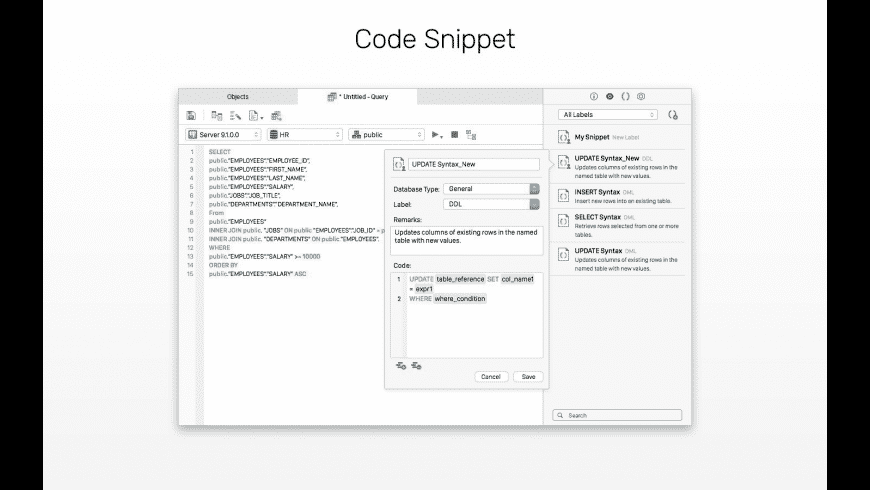Navicat for PostgreSQL. เป็นเครื่องมือกราฟิกที่ใช้งานง่ายสำหรับการพัฒนาฐานข้อมูล PostgreSQL ตั้งแต่การเขียน SQL queries อย่างง่ายไปจนถึงการพัฒนาฐานข้อมูลที่ซับซ้อน. Navicat Postgresql Gui free download - Navicat 15 for MySQL (32-bit) (MySQL GUI), Navicat Premium 15 (64-bit) (Multiple Databases GUI), Navicat for PostgreSQL, and many more programs. Navicat for PostgreSQL is an easy-to-use graphical tool for PostgreSQL database development. From writing simple SQL queries to developing complex databases, Navicat for PostgreSQL is designed to accommodate a wide range of users, from PostgreSQL beginners to seasoned developers.
PostgreSQL Table Foreign KeysA foreign key specifies that the values in a column (or a group of columns) must match the values appearing in some row of another table. We say this maintains the referential integrity between two related tables.
Navicat For Postgresql 12 Registration Key
In the Foreign Keys tab, just simply click a foreign key field for editing. By using the foreign key toolbar, you can create new, edit and delete the selected foreign key field.
Description | |
| Add a foreign key to the table. | |
Delete Foreign Key | Delete the selected foreign key. |
Use the Name edit box to enter a name for the new key.
Use the Referenced Schema and Referenced Table drop-down lists to select a foreign schema and table respectively.
To include field(s)/referenced field(s) to the key, just simply double-click the Fields/Referenced Fields field or click to open the editor(s) for editing.
The On Delete and On Update drop-down list define the type of the actions to be taken.
| RESTRICT | Produce an error indicating that the deletion or update would create a foreign key constraint violation. This is the same as NO ACTION except that the check is not deferrable. |
| NO ACTION | Produce an error indicating that the deletion or update would create a foreign key constraint violation. If the constraint is deferred, this error will be produced at constraint check time if there still exist any referencing rows. This is the default action. |
| CASCADE | Delete any rows referencing the deleted row, or update the value of the referencing column to the new value of the referenced column, respectively. |
| SET NULL | Set the referencing column(s) to null. |
| SET DEFAULT | Set the referencing column(s) to their default values. |
Navicat For Postgresql License
Match Full
Check this option to not allow one column of a multicolumn foreign key to be null unless all foreign key columns are null.
Deferrable
The foreign key constraint can be deferred.
Deferred
The foreign key constraint is checked only at the end of the transaction.
Comment
Define the comment for the foreign key.
Related topic:
Foreign Keys Data Selection
To successfully establish a new connection to local/remote server - no matter via SSL, SSH or HTTP, set the connection properties in the General tab. If your Internet Service Provider (ISP) does not provide direct access to its server, Secure Tunneling Protocol (SSH) / HTTP is another solution. Enter a friendly name to best describe your connection in Connection Name text box.
MySQL and MariaDB Connections
You can connect to your MySQL server remotely however for security reasons native remote direct connections to the MySQL server are disabled. Therefore, you cannot use Navicat Report Viewer or other similar MySQL admin applications running on your computer to connect to the remote server directly unless the User Privileges has been configured.
By default, MySQL gives 'root' as username and leave the password field blank.
Host Name/IP Address
A host name where the database is situated or the IP address of the server.
Port
A TCP/IP port for connecting to the database server.
User Name
User name for connecting to the database server.
Navicat For Postgresql 12

Password
Password for connecting to the server.
Oracle Connection
Navicat Report Viewer supports 2 types of Oracle server connection. In Basic mode, Navicat Report Viewer connects to Oracle through the Oracle Call Interface (OCI). OCI is an application programming interface that allows an application developer to use a third-generation language's native procedure or function calls to access the Oracle database server and control all phases of SQL statement execution. OCI is a library of standard database access and retrieval functions in the form of a dynamic-link library.
In TNS mode, Navicat Report Viewer connects to Oracle server using an alias entry from a tnsnames.ora file through the Oracle Call Interface (OCI). OCI is an application programming interface that allows an application developer to use a third-generation language's native procedure or function calls to access the Oracle database server and control all phases of SQL statement execution. OCI is a library of standard database access and retrieval functions in the form of a dynamic-link library.
By default, Oracle created a number of user accounts upon installation. Administrative accounts: SYS, SYSTEM, SYSMAN, and DBSNMP. Sample schema accounts: SCOTT, HR, OE, OC, PM, IX and SH.
Connection Type
| Basic | Host Name/IP Address Port Service Name/SID |
| TNS | User needs to provide the Net Service Name. |
User Name
User name for connecting to the database server.
Password
Password for connecting to the server.

PostgreSQL Connection
For security reasons native remote direct connections to the PostgreSQL server are disabled. Therefore, you may not be able to use Navicat Report Viewer or other similar applications running on your computer to connect to the remote server. By default, PostgreSQL only allows connections from the local machine using TCP/IP connections. Other machines will not be able to connect unless you modify listen_addresses in the postgresql.conf file, enable host-based authentication by modifying the $PGDATA/pg_hba.conf file, and restart the server. For more information: Client Authentication
By default, PostgreSQL gives 'postgres' as username and leave the password field blank.
Host Name/IP Address
A host name where the database is situated or the IP address of the server.
Port
A TCP/IP port for connecting to the database server.
Initial Database
The initial database to which user connects when making connection.
User Name
User name for connecting to the database server.
Password
Password for connecting to the server.
SQLite Connection
Database File
Specify the initial database file. If the HTTP Tunnel is enabled, you need to enter an absolute file path of the database file in your web server.
User Name
User name for connecting to an existing database.
Password
Password for connecting to an existing database.
SQL Server Connection
Host Name/IP Address
A host name where the database is situated or the IP address of the server.
Authentication
SQL Server uses two ways to validate connections to SQL Server databases: SQL Server Authentication and Windows Authentication.
| SQL Server Authentication | SQL Server Authentication uses login records to validate the connection. Users must provide their server login User Name and Password. |
| Windows Authentication | When a user connects through a Windows user account, SQL Server validates the account name and password using the Windows principal token in the operating system. This means that the user identity is confirmed by Windows. SQL Server does not ask for the password, and does not perform the identity validation. |
Initial Database
The initial database to which user connects when making connection.

